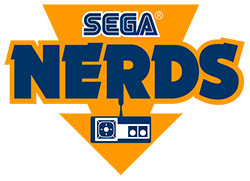
What Would a Complete Sega Retro Machine Look Like?
Depending on your stance, mini-retro consoles are either a great way to experience vintage games or poorly designed gimmicks. Their physical states aside, we can all get aboard the idea of giving players a chance to jump back into the classics, or for newcomers to experience Sega gaming’s roots. As we see it, the only problem with the idea is the lack of coverage that systems like the Mega Drive Mini employ. Sure, 42 games from one console is great, but what would it take to include every game, from every Sega console on one device?
A Legal Dead-end
Before we start, we need to state that this is an entirely hypothetical thought-experiment. Rights are an enormous part of gaming and interactive entertainment, and depending on game developers, publishers, and even the player’s location, opening everything up is impossible.
For an example with developers, consider the lack of Sonic 3 on the Genesis Mini. This was simply due to disputes with licensing the soundtrack. In terms of countrywide restrictions, a better illustration can be found within online sports betting. A list of websites which offer such opportunities can be found if users click for full details here. The gist is that offers like free bets and deposit bonuses rely on regional laws, and similar disparities between areas can also apply for game licensing.
In other words, as much as we love the idea of a full classic Sega gaming console, it’s not something that can ever truly exist as a licensed product. With that said, let’s move on.

Onto the Console
For a start, a hypothetical complete Sega console would need the right controller input. This was one of the issues with the Mega Drive Mini, as the three-button controller came up short with six-button games like Mortal Kombat. To overcome this problem, a new retro Sega console would need to offer essentially a rebuilt Dreamcast controller. This would have all the buttons for Saturn, Mega Drive, and Master System games, with the additional Dreamcast-specific VMU screen.
For processing power, the console would need to employ emulation to ensure total coverage between systems. The good thing about this is that such a system would not be especially expensive to produce, as even high-end Dreamcast emulation is relatively easy on today’s advanced computers. Four gigabytes of RAM, a quad-core CPU of around three gigahertz, and a gigabyte of video memory would not only work perfectly but could also support advanced features like rewinds and save-states.
The most difficult aspect, from our calculations, comes from storage space. To find what sort of space would be required, we went across the Master System, Mega Drive, Saturn, and Dreamcast, and attempted to work out their total library sizes. Multiply this by the average game size per system, add the results together, and we have a ball-park figure of the total storage space that would be required.
- Master System: 360 games at 130kb average = 46 megabytes
- Mega Drive: 900 games at 900kb average = 810 megabytes
- Saturn: 1092 games at 360mb average = 393 gigabytes
- Dreamcast: 620 games at 550mb average = 341 gigabytes
- Total console storage required: just shy of 735 gigabytes
For Simplicity’s Sake
Given the prices of current technology, our theoretical Classic Sega machines would not likely break the $200 mark. This is a lot compared to existing retro consoles, but you can’t argue with the sheer choice a machine like this would offer.
If nothing else, this article could give you some indication of what would be needed to build an emulation system of your own. It might not come with Sega’s stamp of approval, but as long as you own an original game, this sort of behaviour is openly accepted. Just be sure to pair it with a CRT TV if possible, for the ultimate throwback experience.







